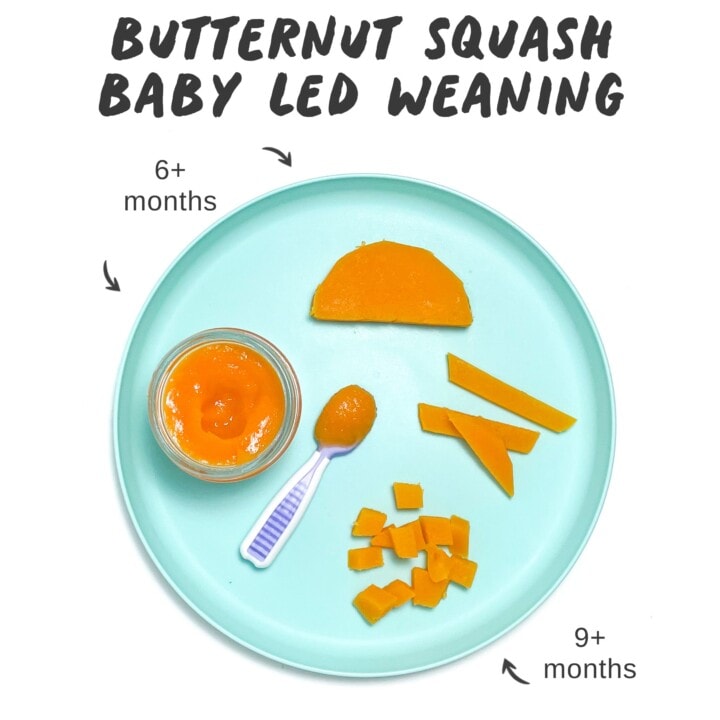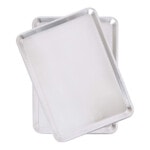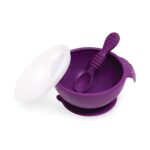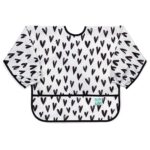Butternut Squash for Baby-Led Weaning
With this informative guide, learn how to serve butternut squash for baby-led weaning. Butternut squash is full of essential nutrients, making it a great first food for babies 6 months and up. Serve it as a baby food puree on a self-feeding spoon, as a solid for the finger food stage, or for baby-led weaning.

Medically reviewed and cowritten by Jamie Johnson, Registered Dietitian Nutritionist (RDN), and Lauren Braaten, Pediatric Occupational Therapist (OT).
Butternut Squash for Baby
Want to give your baby all the healthy nutrients that butternut squash has to offer, but not sure how?
Then, this complete guide on butternut squash for baby-led weaning is for you!
Below, you will find everything you need to know on how to cook and serve butternut squash to your little one – the health benefits, how to serve butternut squash to your baby for baby-led weaning, how to store these recipes, FAQs and so much more!
First time making homemade baby food? Then, I would suggest that you start by reading my very in-depth Complete Guide to Baby-Led Weaning – which covers what exactly is baby-led weaning, to every parent’s concern of baby-led weaning and choking, this guide goes over it all. I will also share how to know when baby is ready for BLW, the top 10 best first foods, a helpful sample blw feeding schedule, helpful tools to have on hand, and much much more!
You can also check out my best-selling cookbook for even more information and recipes!
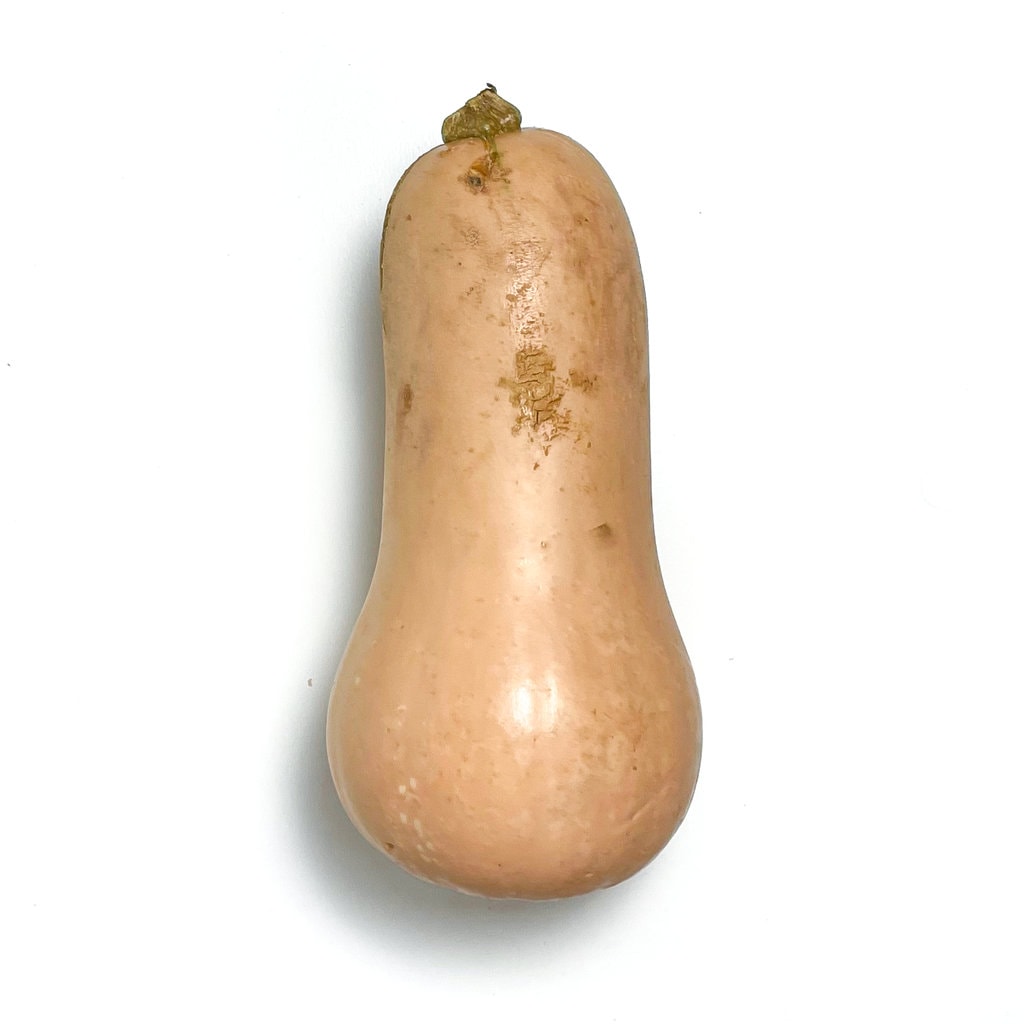
Reasons to Love Butternut Squash for BLW
- Great for baby-led weaning – 6+ months
- Also great for the finger food stage – 9+ months
- Full of essential nutrients for baby
- Different ways for baby to eat – spoon-fed or self-feed
- Easy to make – minimal prep work required
Health Benefits of Butternut Squash for Baby
Butternut squash is bursting with vitamins and minerals necessary for your baby’s development, making it an excellent choice to serve to baby.
- An excellent source of vitamin C for iron absorption and immunity, and vitamin A for eye health.
- A good source of fiber for healthy digestion, and potassium for healthy heart function.
- Contains iron, necessary to avoid iron deficiency anemia.
- Has antioxidants beta carotene and vitamin E.
Spices to Add
Adding spices to your baby’s foods is a great way to introduce more complex flavors at an early age. In particular, adding a little bit of cinnamon, cloves, cardamom, curry, or thyme can really make butternut squash recipes shine.

Frequently Asked Questions
Yes, if you want butternut squash to be your baby’s first food, it definitely can be! It is recommended to wait to introduce the top eight allergen foods to your baby once a few other well-tolerated foods have been introduced, but otherwise foods can be introduced in any order so choose whatever you are most excited for your baby to have.
No, butternut squash is not a common allergen, however, as with any food, start with a small portion and be aware of any signs that might be an allergic reaction after introducing it.
No, butternut squash is not typically a choking hazard once cooked, although its seeds can be. Remember anyone can choke on any food, so always stay close and supervise your baby while they are eating.
How to Prepare Butternut Squash for Baby-Led Weaning
There are several different ways to prepare butternut squash for your baby. Here are some of our favorite ways:
Roasted
Cut butternut squash in half lengthwise and scoop out the seeds and stringy pieces from each half. Place the squash, cut side up into a baking dish and brush with olive oil or melted butter. Roast at 400°F for about 40 minutes or until tender. Remove from oven and allow to cool. Lastly, use a spoon to scoop flesh from the skin.
Steamed
Cut the butternut squash in half, scoop out the seeds, peel the skin, and cut the squash into uniform cubes. Bring 2 inches of water to boil in a large saucepan with a steamer basket. Add squash cover, and steam until very tender, about 15 minutes.
Boiled
Cut the butternut squash in half, scoop out the seeds, peel the skin, and cut the squash into uniform cubes. Fill a large pot with water halfway and bring to a boil. Place squash in the water and reduce heat to medium, for about 15-20 minutes or until squash is tender. Strain the squash through a colander or mesh strainer to remove excess water.
Butternut Squash Puree: You can offer purees and still allow your baby to lead the way with self-feeding by offering the puree on a self-feeding spoon, by placing a few spoonfuls of the puree directly on the tray or in a bowl for your baby to dip their fingers into, or you can even use the puree as a dip for solid foods such a banana or piece of toast.


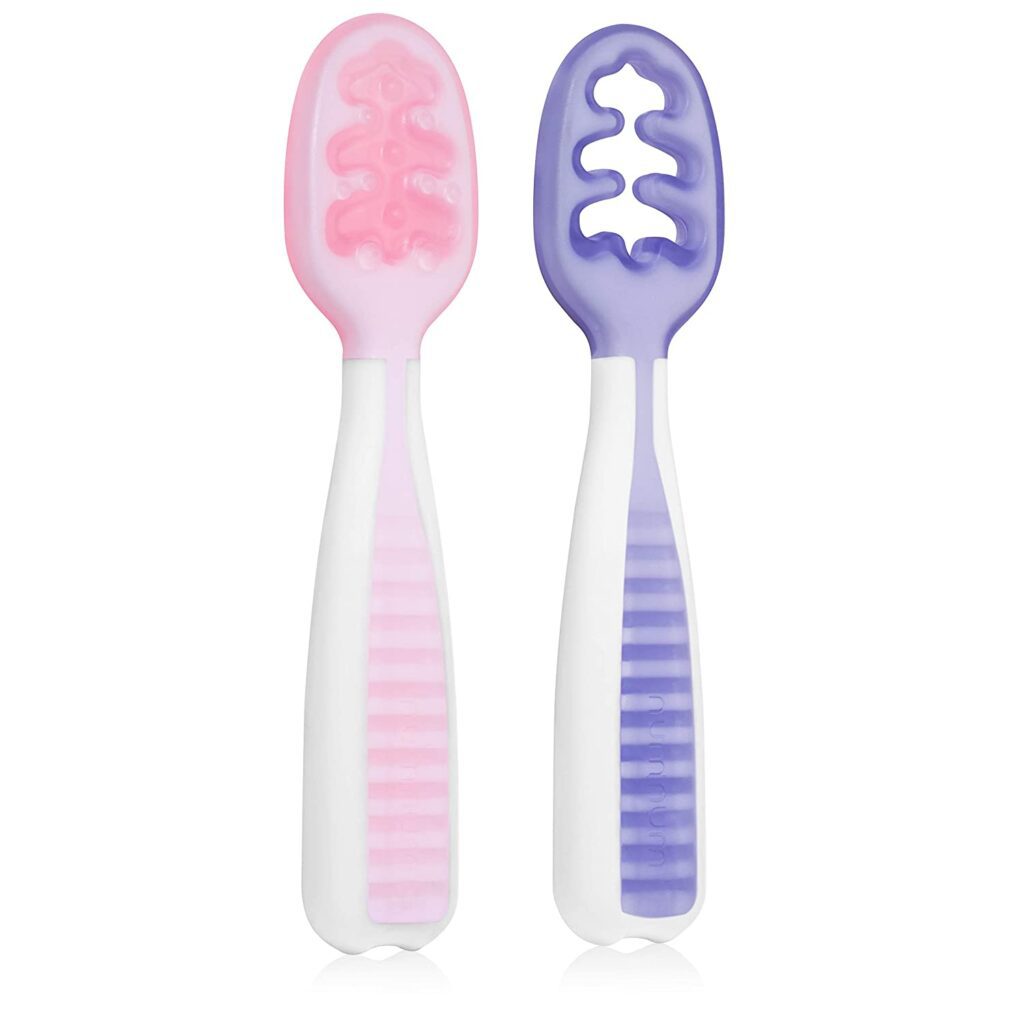

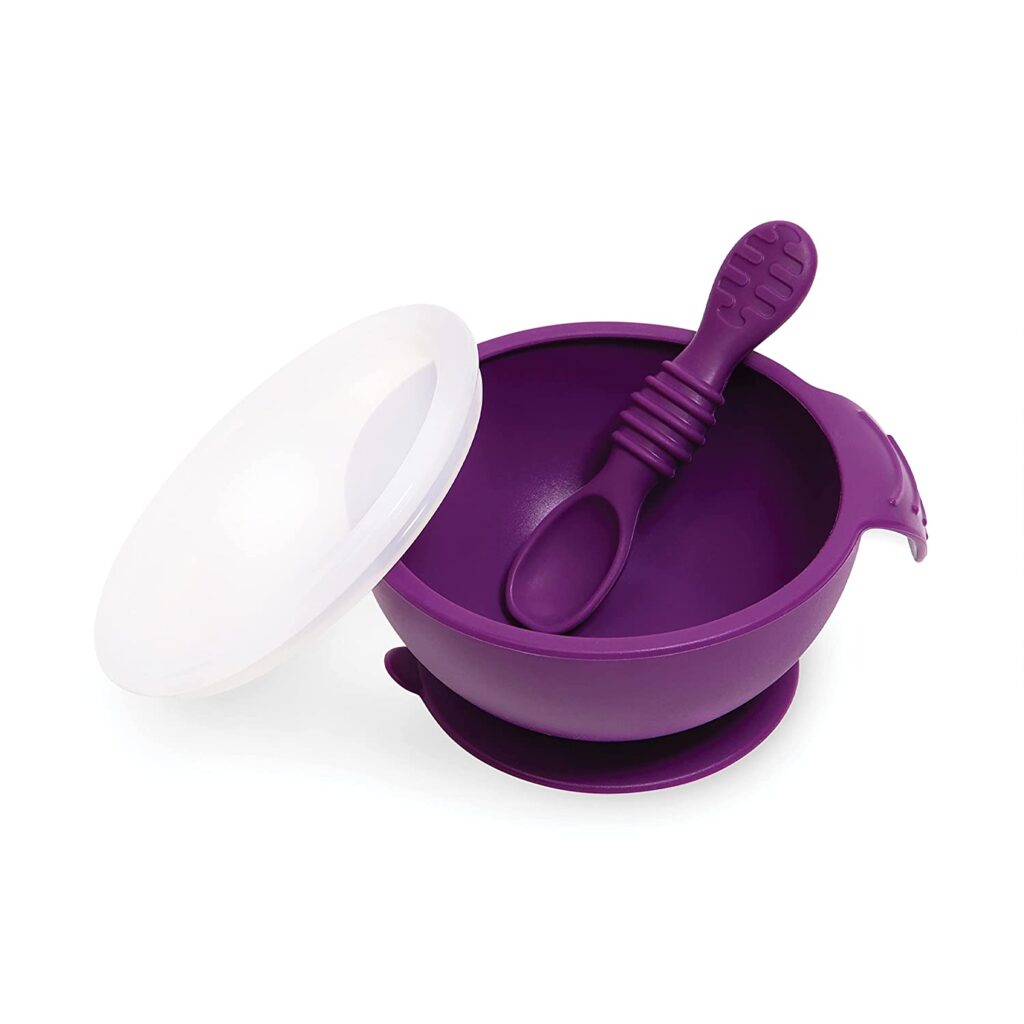

Helpful Tools
Here are some products that help you make and serve butternut squash to your baby even easier! To find even more products that I love, make sure to check out my online shop.
- Highchair
- Saucepans
- Steamer Insert with lid
- Easy to hold fork and spoon
- GOOtensils
- Bowl or Sectioned plate
- Open lid cup
- Bib with catch pocket
- Sleeved bib
- Splat mat to cover the floor
Baby-Led Weaning Feeding Tips
- To steam butternut squash even faster, look for prepackaged butternut squash cubes in the produce section.
- Mashed butternut squash is a great food to serve on a preloaded spoon to help baby practice with utensils since it sticks to the spoon and doesn’t slide off easily.
- Trader Joe’s sells crinkle-cut butternut squash sticks, which can be easier for your baby to grab.
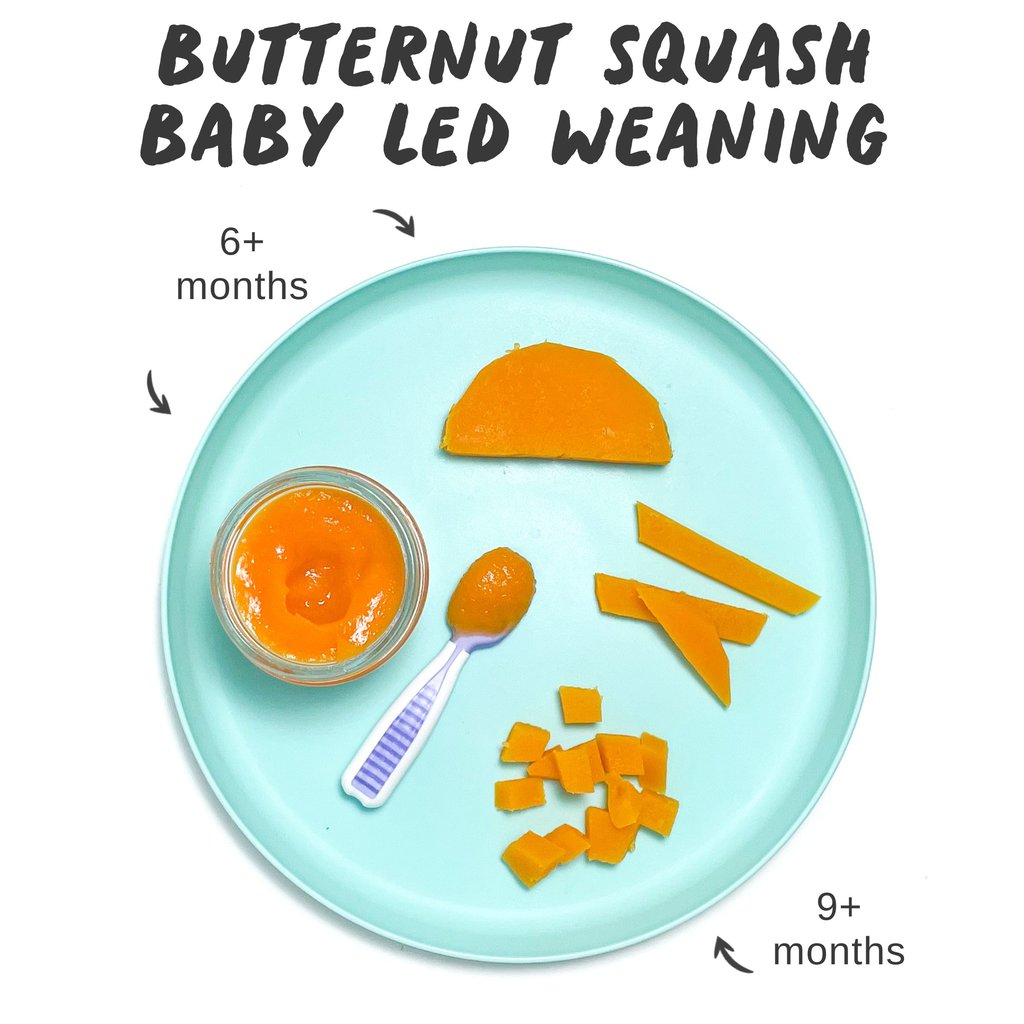
How to Serve Butternut Squash for Baby-Led Weaning
Butternut squash can be a choking hazard for your baby, regardless of whether you are doing baby-led weaning starting at 6 months or during the finger foods stage at 9 months, so it is important to cook and serve them properly.
Steamed or roasted and cut into wedges or strips – (6+ months): Soft, cooked larger pieces at this age are easier for younger babies to grasp. You can also offer mashed butternut squash on a pre-loaded spoon.
Steamed or roasted and cut into cubes – (9+ months): Offer soft, cooked cubes to older babies starting to work on their pincer grasp; you can also continue to offer wedges, strips, or mashed butternut squash.
Foods to Pair with Butternut Squash
Butternut squash can be paired with just about anything for a well-rounded meal. But since most veggies are lacking in protein, including a protein source will help your baby’s tummy feel full and satisfied. And because butternut squash is a great source of vitamin C, which helps with iron absorption, try serving it with a food high in iron to maximize the iron that your baby gets. Additionally, babies need fat for brain development, so pair it with a fat source, which will also help your baby absorb the vitamins found in butternut squash.
- Proteins: chicken, beef, fish, shellfish, pork, turkey, yogurt, beans, tofu, quinoa, lentils, eggs
- Iron foods: chicken, beef, fish, shellfish, pork, turkey, beans, tofu, spinach, peas, chickpeas, quinoa, strawberries, enriched bread and pasta, whole wheat bread and pasta, oats, brown rice, whole grain bread, broccoli
- Fats: Full fat yogurt, whole milk, full fat kefir, avocados, olive oil, butter, egg yolks, salmon, nut butters
Storage
You can store cooked butternut squash in an air-tight container in the fridge for up to 3 days.
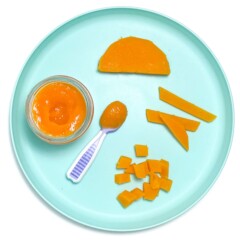
Get the recipe: Butternut Squash for Baby-Led Weaning
Ingredients
- 1/2 butternut squash, deseeded
- 2 tsp olive oil
Instructions
- Preheat the oven to 400° F. Line a baking sheet with parchment paper.
- Cut or mash into age-appropriate pieces.
Notes
- Place a few spoonfuls of purees directly on the tray or in a bowl for your baby to dip fingers into. Model how to dip your fingers into the puree and bring them to your mouth, to taste some.
- Offer your baby a pre-loaded self-feeding utensil and hold it out for them to grasp or set on their tray.
- Use a solid food as a dipper. You can also offer a soft stick-shaped piece of food, such as a soft roasted carrot or bread lightly toasted and cut into strips to dip into the puree.
Did you make this recipe?
Tag @babyfoode on Instagram and hashtag it #babyfoode!

